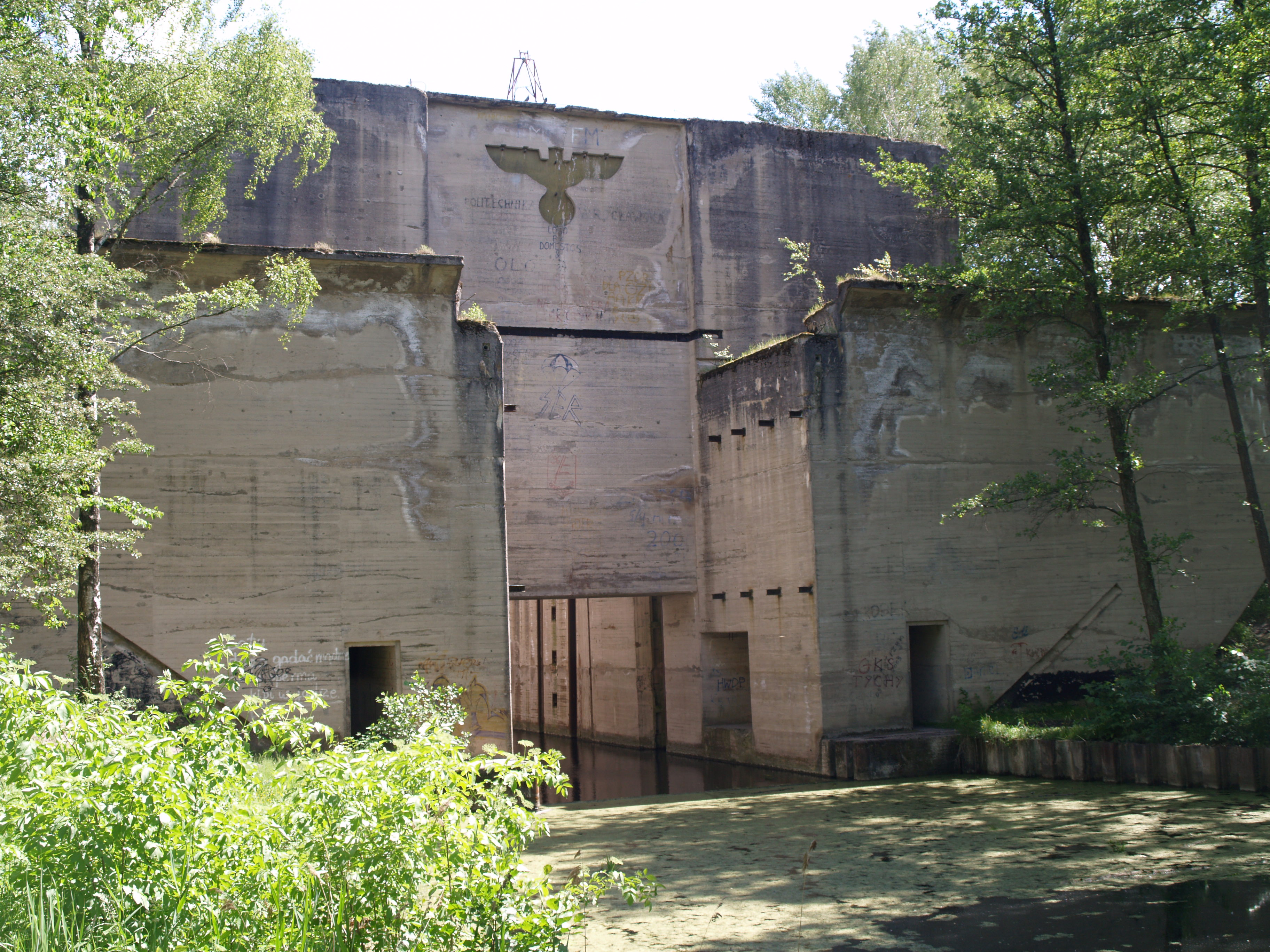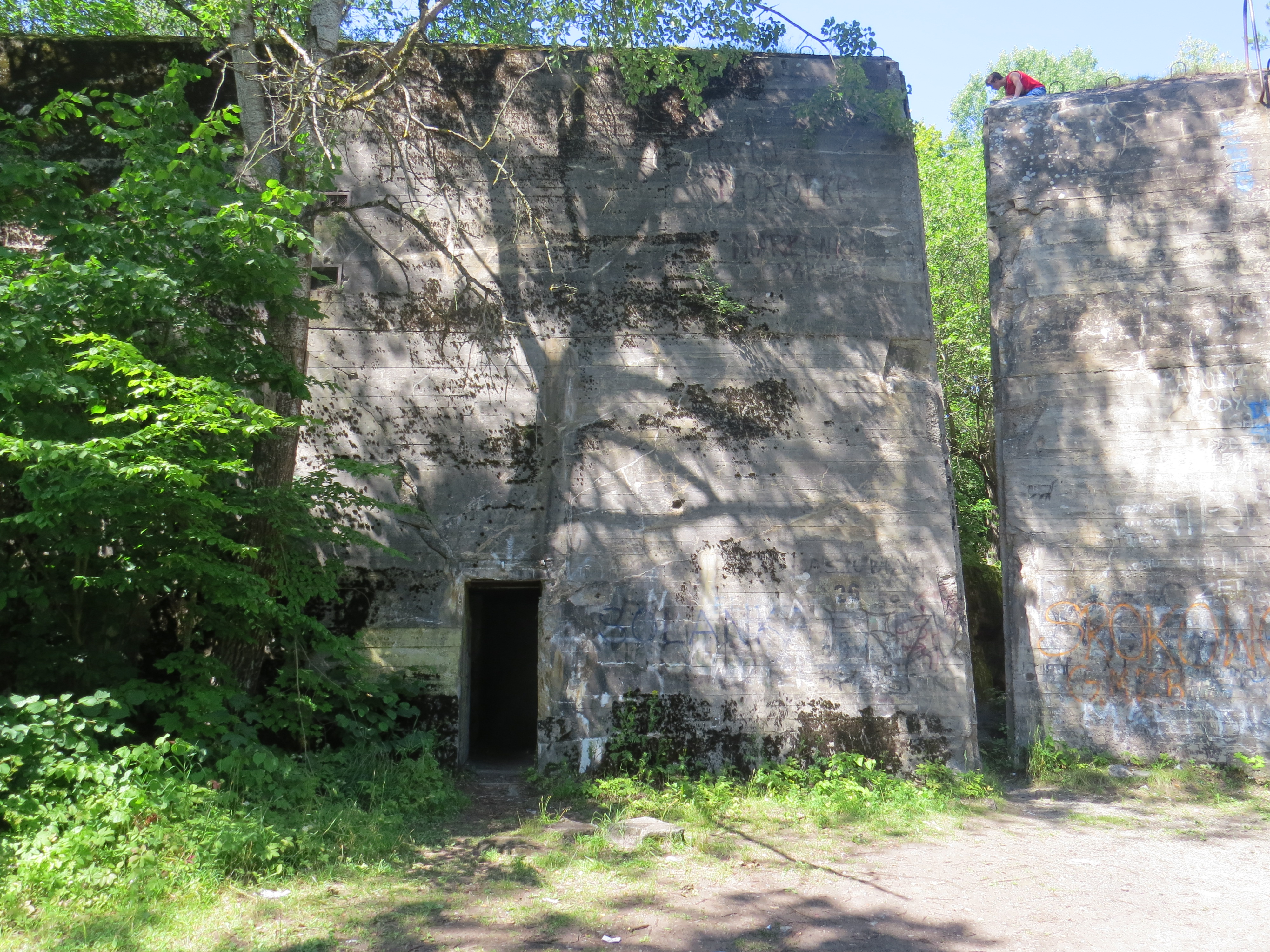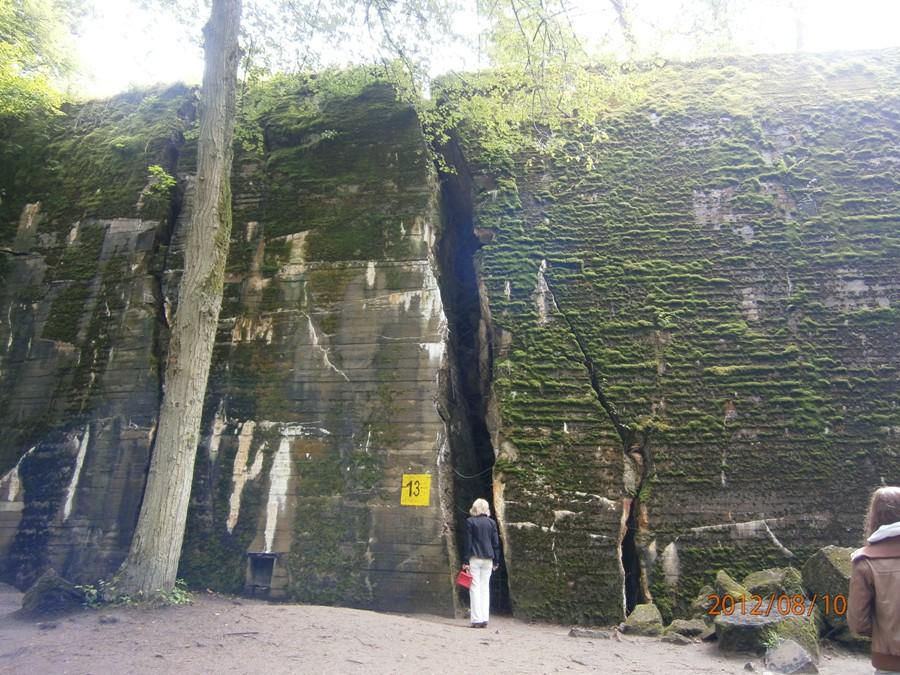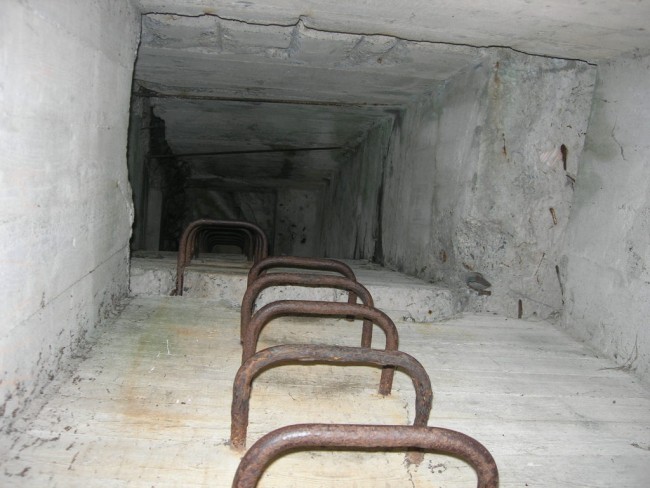Post by Bonobo on Sept 3, 2009 20:47:06 GMT 1
Forest lair where Hitler nightmares took shape
By Maja Czarnecka (AFP)
8/29/09
GIERLOZ, Poland — Lying overgrown in a northern Polish forest, a scattering of ruined concrete bunkers offer a chilling reminder of World War II, when Adolf Hitler turned his darkest dreams into reality.
The "Wolfsschanze" (Wolf's Lair), the Nazi German dictator's command post for much of the war, has long been a major draw for history buffs.
Tourist interest has been stoked by this year's Tom Cruise movie "Valkyrie" about the failed 1944 bomb plot against Hitler which took place here.
Visitors have to use their imagination to paint a picture of the site in its heyday, because the retreating Nazis stripped and dynamited it in 1945. But a guided tour brings the terrible epoch to life.
"Hitler lived right here, in this bunker. He spent more than 800 days at the Wolfsschanze. That's around half the war," said guide Jerzy Szynkowski.
"This is where his most paranoid ideas saw the light of day: the extermination of the Jews, the death camps, the decision to raze Warsaw after the 1944 Uprising," he said.
The bunker remains breathtaking, with its six-metre-thick (20-foot-thick) walls and eight-metre (26-foot) roof.
"He was totally mad," said German schoolteacher Christian Tribus, 44, as he took in the scale.
The command complex was located deep among the marshlands and lakes of East Prussia, a region awarded to Poland under the border changes that followed the Nazis' crushing 1945 defeat.
The 250-hectare (618-acre) site was home to around 200 buildings housing up to 2,000 people. They ranged from aides, officers and SS guards to Hitler's right-hand man and Luftwaffe air force commander Herman Goering, Wehrmacht army commander Wilhelm Keitel, and the ailing dictator's personal doctor.
Hitler also played host to allies such as Fascist Italy's leader Benito Mussolini, who visited the Wolfsschanze three times.
The lair was the largest of 10 command bases used by Hitler across Germany and occupied Europe after World War II began with the Nazi and Soviet carve up of Poland in September 1939.
It was from here that he steered the brutal Nazi assault in the Soviet Union after turning on his erstwhile ally.
He arrived at the site on June 24, 1941, two days after the attack began. He left only on November 20, 1944, as the Soviets rolled back his forces and neared East Prussia.
In early 1945, German sappers used around 10 tonnes of explosives per bunker to try to destroy the site. After the war, Poland had to remove some 54,000 mines.
The Wolfsschanze was opened to the public by Polish authorities as a testimony to the Nazis' crimes. In 1993, four years after the fall of Warsaw's communist regime, the authorities devolved the management to Polish and Austrian investors.
"We get an average of 200,000 visitors a year, mostly Germans but also plenty of Poles," said company boss Jan Zaluska.
"Movies about Hitler and the failed bomb attack have been a big draw," he added.
Count Claus Schenk von Stauffenberg, a high-ranking officer who joined others who had turned against Hitler, tried to kill the dictator at the Wolfsschanze on July 20, 1944.
But a fellow-officer was annoyed by the briefcase containing the bomb and moved it from where von Stauffenberg -- played by Cruise in "Valkyrie" -- had left it.
As a result, Hitler was simply injured. Von Stauffenberg and his fellow conspirators, who were executed the same day, have become icons for many Germans since the war.
"This is a both a place of shame in the history of Germany, and a place of glory thanks to von Stauffenberg, " said Rainer Jonas, a retired officer from post-war, democratic Germany's army, the Bundeswehr.
"We couldn't come here during the Cold War," when Poland and the then West Germany lay on either side of the Iron Curtain, Jonas noted.
He said he had served under Bertold von Stauffenberg, one of von Stauffenberg' s three sons, who was 10 years old when his father was executed, and who went on to became a Bundeswehr general.
en.wikipedia.org/wiki/Wolf%27s_Lair
strony.aster.pl/pivus/foto/galeria-mazury-2007/slides/Wilczy%20szaniec-bunkier%20Hitlera.html





By Maja Czarnecka (AFP)
8/29/09
GIERLOZ, Poland — Lying overgrown in a northern Polish forest, a scattering of ruined concrete bunkers offer a chilling reminder of World War II, when Adolf Hitler turned his darkest dreams into reality.
The "Wolfsschanze" (Wolf's Lair), the Nazi German dictator's command post for much of the war, has long been a major draw for history buffs.
Tourist interest has been stoked by this year's Tom Cruise movie "Valkyrie" about the failed 1944 bomb plot against Hitler which took place here.
Visitors have to use their imagination to paint a picture of the site in its heyday, because the retreating Nazis stripped and dynamited it in 1945. But a guided tour brings the terrible epoch to life.
"Hitler lived right here, in this bunker. He spent more than 800 days at the Wolfsschanze. That's around half the war," said guide Jerzy Szynkowski.
"This is where his most paranoid ideas saw the light of day: the extermination of the Jews, the death camps, the decision to raze Warsaw after the 1944 Uprising," he said.
The bunker remains breathtaking, with its six-metre-thick (20-foot-thick) walls and eight-metre (26-foot) roof.
"He was totally mad," said German schoolteacher Christian Tribus, 44, as he took in the scale.
The command complex was located deep among the marshlands and lakes of East Prussia, a region awarded to Poland under the border changes that followed the Nazis' crushing 1945 defeat.
The 250-hectare (618-acre) site was home to around 200 buildings housing up to 2,000 people. They ranged from aides, officers and SS guards to Hitler's right-hand man and Luftwaffe air force commander Herman Goering, Wehrmacht army commander Wilhelm Keitel, and the ailing dictator's personal doctor.
Hitler also played host to allies such as Fascist Italy's leader Benito Mussolini, who visited the Wolfsschanze three times.
The lair was the largest of 10 command bases used by Hitler across Germany and occupied Europe after World War II began with the Nazi and Soviet carve up of Poland in September 1939.
It was from here that he steered the brutal Nazi assault in the Soviet Union after turning on his erstwhile ally.
He arrived at the site on June 24, 1941, two days after the attack began. He left only on November 20, 1944, as the Soviets rolled back his forces and neared East Prussia.
In early 1945, German sappers used around 10 tonnes of explosives per bunker to try to destroy the site. After the war, Poland had to remove some 54,000 mines.
The Wolfsschanze was opened to the public by Polish authorities as a testimony to the Nazis' crimes. In 1993, four years after the fall of Warsaw's communist regime, the authorities devolved the management to Polish and Austrian investors.
"We get an average of 200,000 visitors a year, mostly Germans but also plenty of Poles," said company boss Jan Zaluska.
"Movies about Hitler and the failed bomb attack have been a big draw," he added.
Count Claus Schenk von Stauffenberg, a high-ranking officer who joined others who had turned against Hitler, tried to kill the dictator at the Wolfsschanze on July 20, 1944.
But a fellow-officer was annoyed by the briefcase containing the bomb and moved it from where von Stauffenberg -- played by Cruise in "Valkyrie" -- had left it.
As a result, Hitler was simply injured. Von Stauffenberg and his fellow conspirators, who were executed the same day, have become icons for many Germans since the war.
"This is a both a place of shame in the history of Germany, and a place of glory thanks to von Stauffenberg, " said Rainer Jonas, a retired officer from post-war, democratic Germany's army, the Bundeswehr.
"We couldn't come here during the Cold War," when Poland and the then West Germany lay on either side of the Iron Curtain, Jonas noted.
He said he had served under Bertold von Stauffenberg, one of von Stauffenberg' s three sons, who was 10 years old when his father was executed, and who went on to became a Bundeswehr general.
en.wikipedia.org/wiki/Wolf%27s_Lair
strony.aster.pl/pivus/foto/galeria-mazury-2007/slides/Wilczy%20szaniec-bunkier%20Hitlera.html











